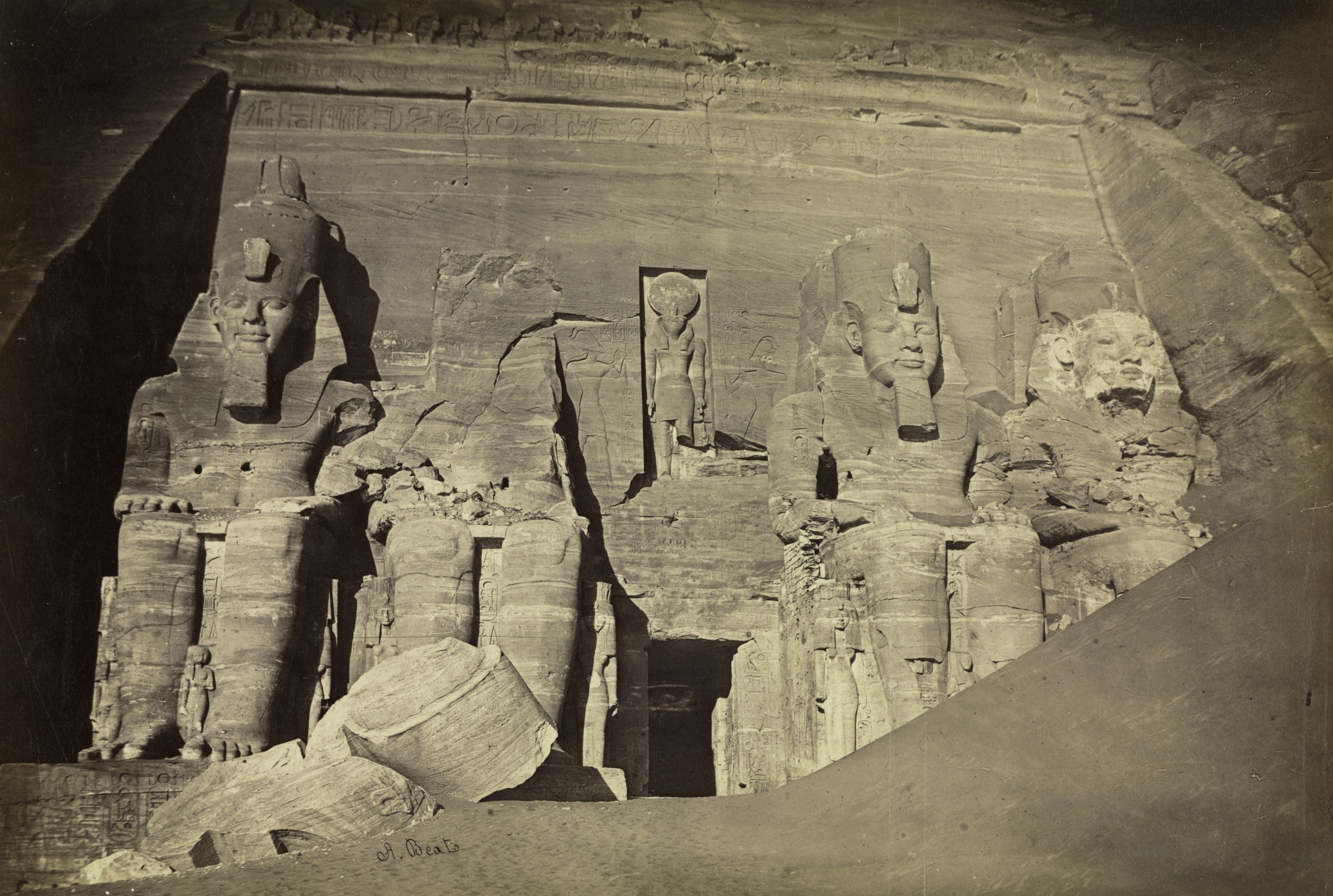The Cleveland Museum of Art
Collection Online as of April 25, 2024

Temple of Ramesses II, Abu Simbel
c. 1860s
(British, c. 1825–1903)
Image: 26.1 x 38.4 cm (10 1/4 x 15 1/8 in.); Matted: 45.7 x 55.9 cm (18 x 22 in.)
John L. Severance Fund 1992.307
Location: not on view
Description
Throughout the 1800s and into the 1900s, prints, paintings, and photographs, like Louis Haghe’s Egypt and Nubia series, brought back by artists who voyaged to Egypt, inspired American and European artists, architects, and designers to emulate ancient Egyptian motifs and styles. Egyptomania blossomed through the 1800s and can be seen in architecturearound cities like Washington, DC, and in the interiors of aristocratic homes, as well as in funerary monuments, such as in Lake View Cemetery in Cleveland, Ohio. Looking back at these creations provides an interesting historical groundwork for
debating who has the right to interpret Egyptian motifs and styles.
- Dr. and Mrs. C. T. Isaacs
- Turner, Evan H. "The Year in Review for 1992." The Bulletin of the Cleveland Museum of Art 80, no. 2 (1993): 38-79. Mentioned: p. 46, 67 www.jstor.orgCleveland Museum of Art, Tom E Hinson. Catalogue of Photography. Cleveland, OH: Cleveland Museum of Art, 1996. Reproduced: P. 95
- Egyptomania: Fashion's Conflicted Obsession. The Cleveland Museum of Art, Cleveland, OH (organizer) (April 1, 2023-January 28, 2024).Pyramids & Sphinxes: Views of Egypt. The Cleveland Museum of Art, Cleveland, OH (organizer) (February 6-May 24, 2016).Nineteenth Century Views of Egypt. The Cleveland Museum of Art, Cleveland, OH (organizer) (May 19-September 9, 1992).
- {{cite web|title=Temple of Ramesses II, Abu Simbel|url=false|author=Antonio Beato|year=c. 1860s|access-date=25 April 2024|publisher=Cleveland Museum of Art}}
Source URL:
https://www.clevelandart.org/art/1992.307